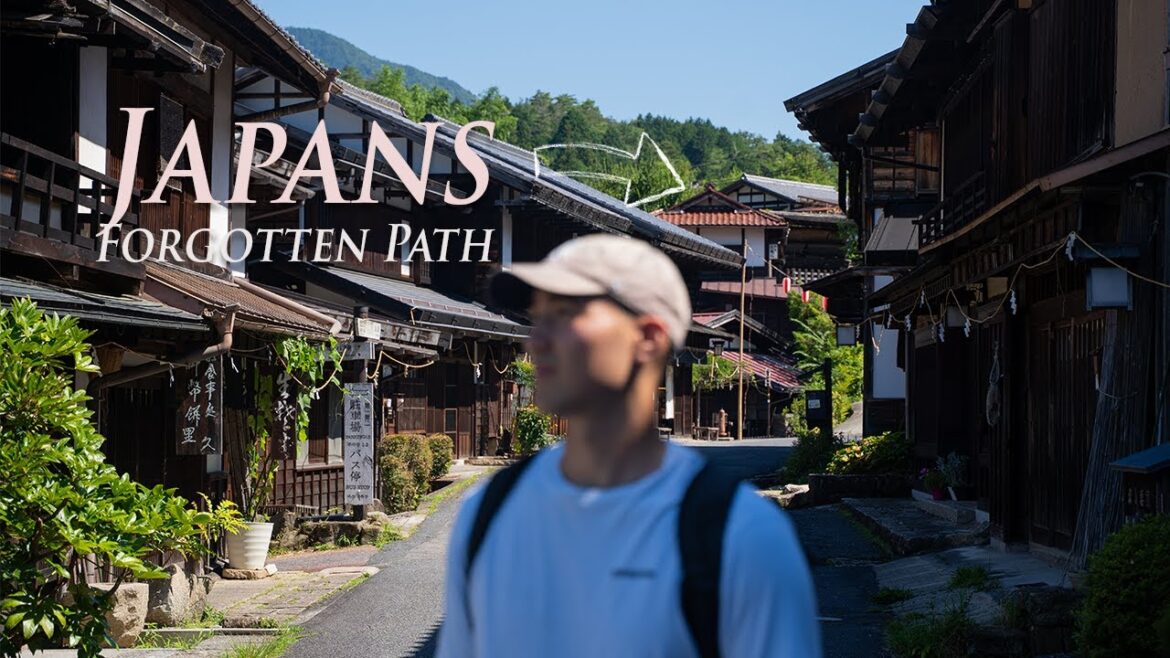The Most Beautiful Road in Japan | Nakasendō
The old Nakasendō was one of
Japan’s five great highways, connecting Kyoto and Edo through the
mountains of Nagano and Gifu. Merchants, samurai, and travelers all passed
along this route. For this video, I’m exploring the Kiso Valley, one of the most
beautifully preserved parts of the old Nakasendō. I originally came to Nagano for a quick trip, but I couldn’t resist seeing this historic
path for myself. Let’s get into the video. I began my adventure entering the
Kiso Valley from the city of Shiojiri, not really knowing what to expect. I’d
seen photos of the preserved towns, but I wanted to look past the tourist
trail and experience it myself. This stretch of the old Nakasendō, known as the
Kiso Kaidō, is lined with post towns called juku in Japanese. During the Edo period, these were
rest stops for travelers walking between Kyoto and Edo — places where merchants, samurai,
and messengers could eat, sleep, and resupply. I headed into the main street of Narai-juku,
the 34th post town of the 69 that once lined the Nakasendō. It was often called
“Narai of a Thousand Houses” — and you can see why. A long stretch of dark
wooden buildings, perfectly preserved. It did feel a little touristy,
with lots of cafés and shops, but since I arrived early in the morning,
it was quiet. Wandering the back alleys, I found Chōsen-ji Temple with its
stunning dragon painting on the ceiling. Just above town sits Narai’s Suwa Shrine,
surrounded by tall cedars and dedicated to the deity of safe journeys. Fitting, considering
how many travelers once passed through here on their way across the Torii Pass — one of the
most difficult sections of the Nakasendō. Later that evening, I escaped
the rain in Kiso-Hirasawa, a town just south of Narai-juku. In summer, hot valley air often mixes with cool mountain air,
creating perfect conditions for sudden afternoon showers. Kiso-Hirasawa is known for its
lacquerware. I was surprised how beautiful and authentic the town felt —
traditional wooden houses still lived in, and local workshops carrying on a craft that’s
thrived here since the Edo period. Craftsmen once supplied durable, high-quality
goods to travelers along the road. That day, I also stopped in Yabuhara-juku, the
35th post town on the Nakasendō. These days it’s much quieter and less preserved than the others.
Not every juku has become a tourist hub — some remain simple local towns. I visited a tucked-away
temple and shrine, surrounded by trees. Places like this feel more authentic
than the crowded spots in Kyoto or Osaka. That night, I passed through Fukushima-juku on my
way to Tsumago. Fukushima was once home to one of the four major checkpoints of Edo Japan. Even
at night, you can feel its weight of history. The next day, I met up with my friend Ryan Bednar,
a Canadian filmmaker. Together, we walked the Magome–Tsumago trail. This is one of
the best-preserved sections of the Nakasendō, with stone paths and forest trails that make you feel
like you’ve stepped back into Edo-period Japan. Tsumago itself is one of the
most beautiful post towns I’ve ever seen. Even with small signs of
modern life, it feels like a living museum. The wooden houses are stunning, and I
couldn’t stop taking photos. The only problem? It was boiling hot — 34°C — and we had to
be careful with water and batteries. From there we continued to Magome-juku, perched on the mountainside
with sweeping views of the valley. Walking its main street, lined with old wooden
houses and flowing water channels, felt like stepping into a
postcard. No exaggeration. We finished the hike exhausted but
amazed. This section of the Nakasendō was one of the most atmospheric
places I’ve visited in Japan — the mountain paths and post towns really
do transport you back to another time. It’s been a while since my last video
— no excuses, life just got in the way. But I’m back, and I’ve got a trip
to Hokkaidō planned for September. I want to see the volcanic landscapes, and the
cool-but-not-cold weather should be perfect. Thanks so much for watching. If you enjoyed
this video, please give it a like and hit subscribe. As of recording, I’m at
113 subs — if I can reach 200 by October, I’ll be happy. Let’s make it
happen. See you in the next video!
Join me as I explore Japan’s forgotten Edo road — the Nakasendō. Once a vital highway connecting Kyoto and Edo (modern-day Tokyo), the Nakasendō carried samurai, merchants, and travelers through the beautiful Kiso Valley and its historic post towns like Magome and Tsumago.
In this episode, I take you along this ancient path, uncovering its history, cinematic landscapes, and the unique charm of Japan’s countryside. This is part of my new weekly vanlife series, where I share hidden gems, culture, and adventures from across Japan.
00:00 Intro
00:35 Kiso Valley
02:02 Narai Juku
03:27 Vanlife
06:06 Lesser Known Juku
09:08 Tsumago Magome Walk
14:42 Outro


6 Comments
Glad to see new content. I love the segments that include the postcards of old woodblock prints that help you provide the historical context.
Great job. Like Dennis said, the post card thing was cool. Keep it up.
Postcards are such a nice touch man
V enjoyable thank you. You deserve way more subs. In the high thousands.
I’m in !
Great views of Japan ! Beautiful video 👍🏻💜😊 Thanks Stephen for this wonderful share ! 🤗
Congrats on 1k views bro!! Nice finally seeing how your trip played out when we weren't travelling together. But dude the water wheel slomo shot was my fav in the whole vid holyyyy!